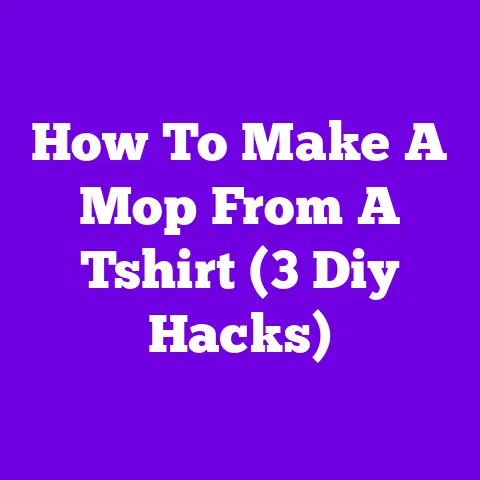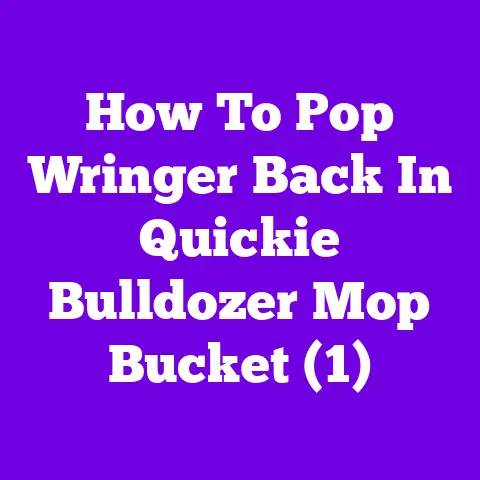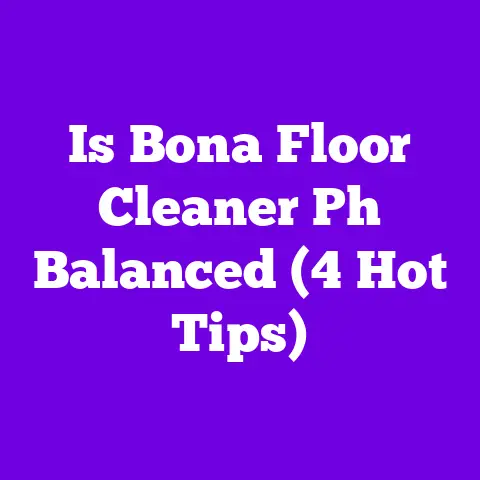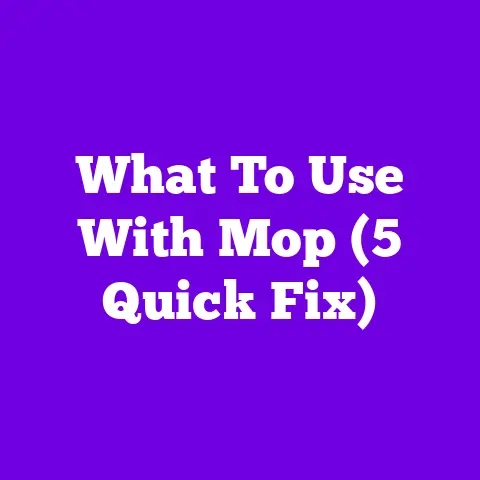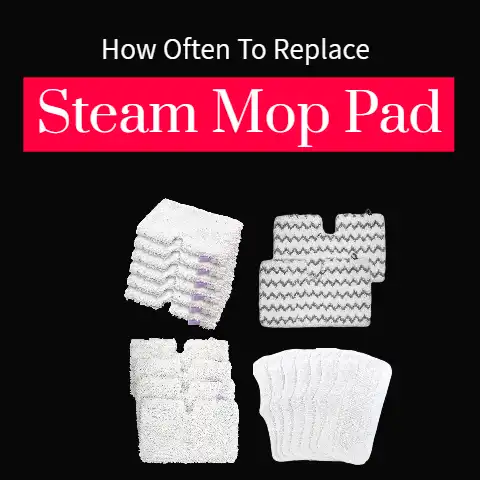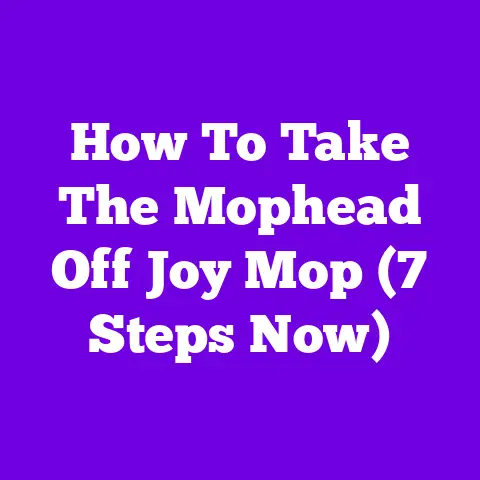Can I Steam Mop Unsealed Waxed Wood Floor (Caution!)
Using steam mops on unsealed waxed wood floors can be a tricky subject. The history of floor maintenance offers insight into how people have cared for their floors over the centuries. In the 1800s, wood floors were a symbol of class and refinement, often polished with natural oils and waxes to maintain their charm. Fast forward to today, and we still care deeply about preserving the beauty of our wood floors—only now, we have advanced tools like steam mops.
Can You Steam Mop Unsealed Waxed Wood Floors?
I’ve been asked countless times, “Can I steam mop my unsealed waxed wood floor?” The short answer is: No, it’s not recommended. Let me explain why.
Why Not Steam Mop?
Steam mops use hot steam to clean surfaces. On sealed floors, this is fantastic because the seal protects the wood from moisture damage. Unsealed floors, however, are vulnerable. The steam can seep into the wood, causing swelling, warping, or even mold growth. Waxed surfaces can become dull or lose their protective layer.
Personal Story
Once, I had a client who insisted on using a steam mop on his unsealed floor. He thought it would make cleaning easier. A few weeks later, he called me back—not for cleaning but for repair. The floor was warped beyond simple fixes. It was a lesson learned the hard way!
Understanding Unsealed Waxed Wood Floors
Wood floors have been cherished for their natural beauty and warmth since ancient times. They were first seen in wealthy European homes during the Middle Ages and became widespread by the 1600s. Back then, finishing techniques were primitive compared to today’s standards. Waxing was one of the primary maintenance methods that emerged during this period.
Unsealed waxed wood floors are those that haven’t been coated with a protective sealant like polyurethane or varnish. Instead, they rely on regular applications of wax to protect and enhance their appearance. This makes them more susceptible to damage from moisture and stains but also allows them to breathe more naturally.
What Happens When You Use Steam?
Let’s talk science for a moment. Steam mops work by heating water to produce steam, which is then applied to the floor through a microfiber pad. This steam penetrates dirt and grime, lifting it away without chemicals. But here’s the catch: wood is porous and absorbs moisture.
When steam is applied to an unsealed surface, it infiltrates the wood fibers, causing them to swell and contract as they dry. Over time, this can lead to cupping (where edges rise above the center of the plank) or crowning (where the center rises above the edges).
Moreover, steam can dissolve and strip away the protective wax layer, leaving the wood even more vulnerable. It’s like washing your hair with dish soap—it might get clean initially but at the cost of stripping essential oils.
Alternatives to Steam Mopping
1. Dry Mop First
Before anything else, use a dry mop or broom.
- Get your materials: A microfiber dry mop works best.
- Sweep the area: Focus on corners and under furniture.
- Check for residue: Make sure all dirt and debris are gone.
Using a dry mop is akin to giving your floor a dusting session. It removes loose dirt, pet hair, and other debris that might scratch the surface if left unattended.
2. Use a Damp Mop
A lightly damp mop can be safe if used correctly.
- Prepare your mop: Wring out excess water—your mop should barely feel damp.
- Test an area: Always start in an inconspicuous spot.
- Mop gently: Use smooth, even strokes.
- Dry immediately: Follow with a clean, dry cloth to absorb any moisture.
When using a damp mop, imagine you’re using it like a slightly moist sponge rather than a wet rag. The goal is to clean without soaking the wood.
3. Waxing
Regular waxing helps protect your floor and maintain its shine.
- Choose the right wax: Ensure it’s suitable for unsealed wood.
- Apply the wax: Use a soft cloth or applicator pad.
- Let it dry: Follow manufacturer instructions for drying time.
- Buff the floor: Use a clean cloth to bring out the shine.
Waxing isn’t just about making your floor look good; it’s about creating a barrier that guards against spills and stains while enhancing the depth of your wood’s natural grain.
Common Mistakes to Avoid
- Over-wetting the Mop: Leads to water damage.
- Using Harsh Cleaners: Can strip wax or discolor wood.
- Skipping Regular Cleaning: Dirt buildup can scratch surfaces.
These mistakes might seem minor but can have long-term consequences on your floor’s health and aesthetics.
Detailed Steps for Maintaining Unsealed Waxed Wood Floors
1. Routine Cleaning
- Daily Sweeping: Use a soft-bristle broom or microfiber cloth daily to remove dust.
- Weekly Dust Mopping: Employ a dust mop weekly to catch any remaining particles.
- Monthly Damp Mopping: With water only or a cleaner specifically designed for waxed wood floors.
2. Waxing Procedure
- Choose Quality Wax: Brands like Minwax or SC Johnson are well-regarded.
- Prepare Your Floor: Clean thoroughly before application.
- Apply Evenly: Spread wax in thin layers for best results.
- Buffing Technique: Use circular motions to bring out a high shine after drying.
3. Spot Cleaning
- For spills, blot with a soft cloth immediately—don’t rub as it spreads stains.
- Use mild soap and water for sticky spots but dry promptly after cleaning.
Proper Cleanup and Finishing
- Inspect your work: Check for missed spots or streaking.
- Store materials properly: Keep mops and cloths clean and dry.
- Schedule regular maintenance: Set reminders for routine waxing and cleaning.
Safety Considerations
- Always test new cleaning products in a hidden area.
- Wear gloves if sensitive to cleaning agents.
- Ensure the room is well-ventilated during cleaning and waxing.
Additional Tips
- Keep humidity levels consistent in your home—use dehumidifiers if necessary.
- Place mats at entrances to reduce dirt tracked onto floors.
- Use furniture pads under heavy pieces to prevent indentations or scratches.
FAQ Section
Q1: Can I use vinegar on unsealed wood floors?
A1: Vinegar is acidic and can damage wood fibers. It’s best avoided as it can erode both wood and wax over time.
Q2: How often should I wax my unsealed wood floor?
A2: Typically every 6-12 months, depending on traffic and usage. High traffic areas may require more frequent attention.
Q3: What if my floor already shows signs of damage?
A3: Consult a professional for repairs or refinishing options. They might recommend light sanding followed by additional waxing or sealing treatments.
Q4: Are there specific products I should avoid?
A4: Avoid any products containing ammonia or bleach, as these can strip finishes and cause discoloration.
Maintaining unsealed waxed wood floors demands care and attention, but with the right approach, you can keep them looking beautiful without risking damage from steam mops. Remember that patience and regular maintenance go hand in hand when preserving these elegant surfaces.

